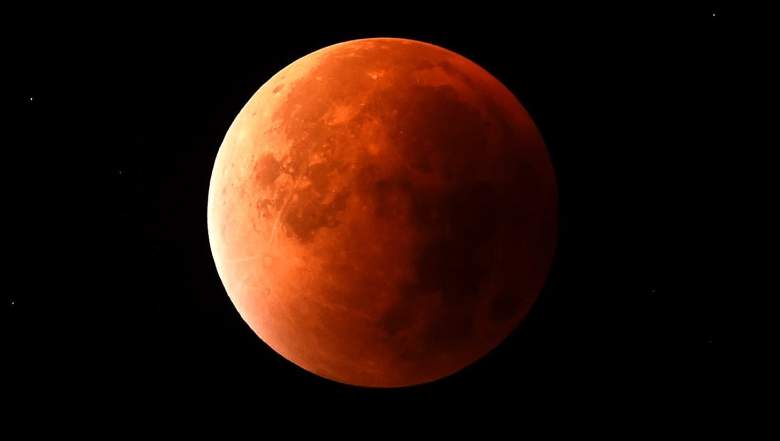
This morning we had a spectacular view of the lunar eclipse: a moon with hues of red known as the Blood Moon. And because this was the second full moon of the month and a slightly larger moon than normal, the whole thing was called the “Super Blue Blood Moon.” All those things happening at once are pretty rare. Unlike September 2015, when we got to see the eclipse at night, we had to watch this one in the morning, which wasn’t quite as much fun. How long will we have to wait until the next lunar eclipse?
The next lunar eclipse is July 27 of this year. But don’t get too excited yet. The July lunar eclipse won’t be visible in the U.S. this time around. You can only see it if you’re in Africa, the Middle East, or India. The United States won’t see another lunar eclipse with a blood moon until January 21, 2019, about a year from now. The 2019 eclipse will be visible over northwest Africa, Europe, and the Americas.
In a lunar eclipse, the Earth is between the moon and the sun, and all three objects are in perfect alignment, as NASA explains. Therefore, the earth is creating a shadow on the moon’s surface, making it turn red. The lunar eclipse can only happen when there’s a full moon, but it doesn’t happen every time there’s a full moon because the moon is about 5 degrees off from perfect alignment with earth’s orbital plane, notes EarthSky.
Today’s lunar eclipse might have also gotten you thinking about the solar eclipse. In a solar eclipse, the moon is between the Earth and the sun, so the moon blocks the sun. If you’re in the path of totality today, it will get so dark for about two to three minutes that you will be able to see planets in the middle of the day.
So when is the next solar eclipse? Unlike partial solar eclipses, which are returning in 2018, the next total solar eclipse isn’t until July 2, 2019. But you won’t be able to see it in the U.S. Totality will be visible from the southern Pacific Ocean east of New Zealand, to the Coquimbo Region in Chile, and Argentina at sunset. This one will be about twice as long as the one today. The maximum visible time will be 4 minutes 32 seconds from the Pacific Ocean.
The next total solar eclipse after that is December 14, 2020. Its path is similar to the eclipse that was on February 26. Like the July 2019 eclipse, this one will be visible from Chile and Argentina. Then after that, you’ll have to wait until December 4, 2021. This will be an unusual eclipse, with totality moving from east to west across Antarctica. Most eclipses move from west to east.
The next total solar eclipse in the United States won’t happen until April 8, 2024. This one will have a line of totality crossing Texas, through the Midwest, and over Indianapolis, Cleveland, Buffalo NY, over New England, and passing over Maine and New Brunswick, Canada. And we won’t see the next coast-to-coast solar eclipse in the U.S. until August 12, 2045.